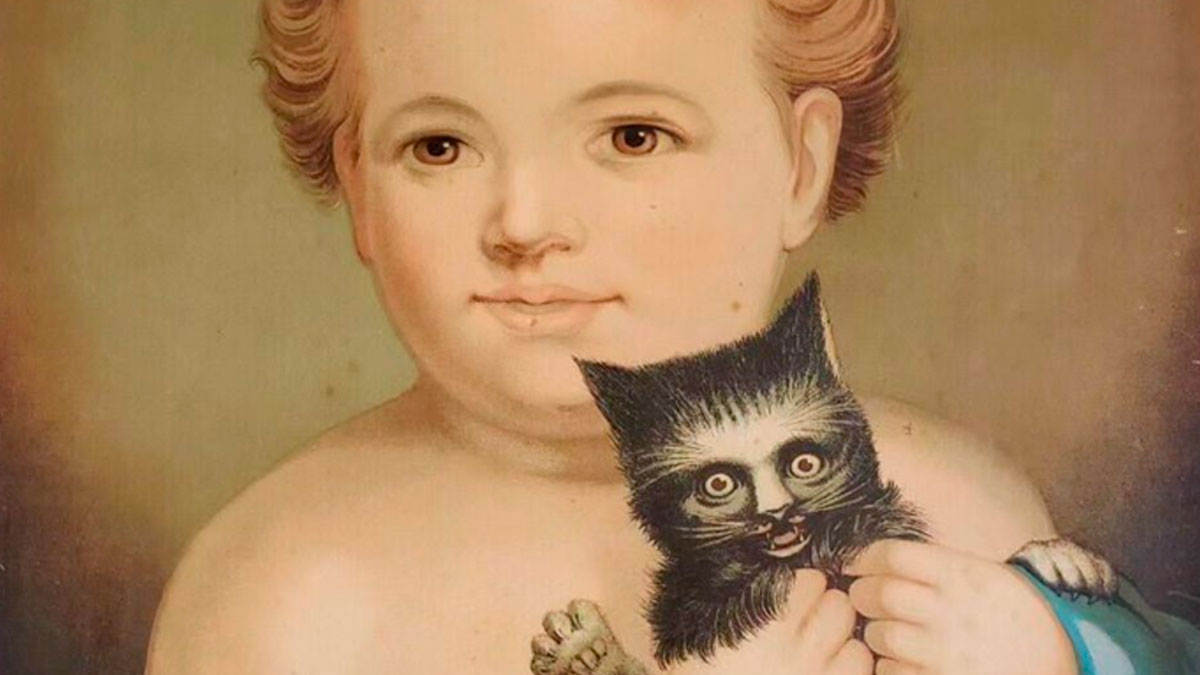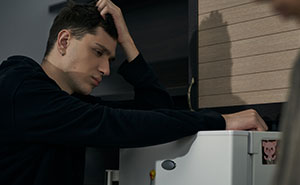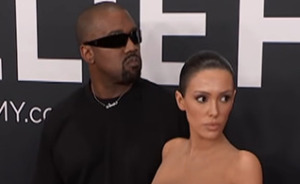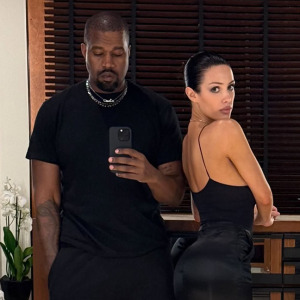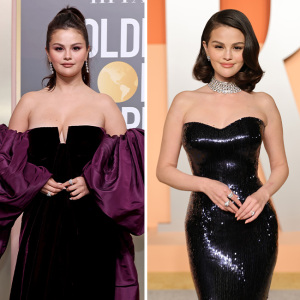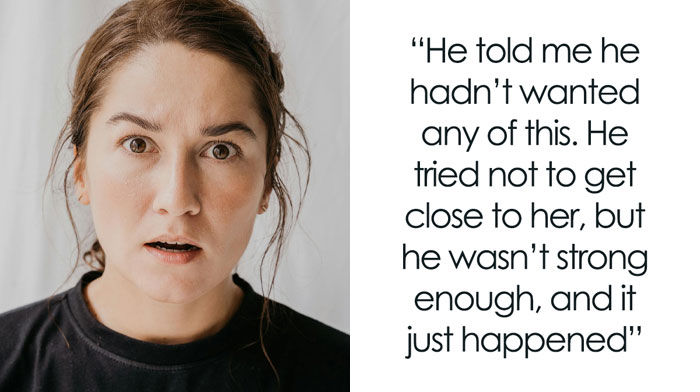I believe it was Horace who said "A picture is a poem without words." Well, he clearly wouldn't have said that if he knew what Internet memes are. Paintings and words can go together very well, and even great works of art can be as funny as they are stunning.
One creator on Instagram proves this by adding witty captions to random works of classical art. Who said that classical art can't be relatable? Definitely not the person behind this page! If you think paintings and art are boring, be prepared to change your mind as you scroll through this list of their newest classical art memes.
More info: Instagram
This post may include affiliate links.
Britain and America hanged witches. Heretics and women convicted of petty treason were burned.
Women who didn't conform to societal expectations were suspected as witches.
All those guys, except the pope and his bff, look sad or horrified tho. :D
Have you seen human emotions before? The Pope in this artwork definitely looks sad and his BFF the cardinal doesn't look happy either.
Load More Replies...They were both hung and burned, they were also drowned as well
Load More Replies...Mosty it was Protestants doing witch hunts in the US and UK.
Load More Replies...FB suggests people I don't know and who don't share any friends with me...what's up with that? Hey rando, FB says we should be friends!
Load More Replies...Let's play a quick association game. When you hear "classical art," do you immediately think "funny"? Probably not, unless you're a connoisseur of fine art or an art historian. But I'm here to tell you that there are plenty of funny classical (and I'm using the term loosely here) painters who didn't shy away from acting like silly little geese.
Today, artist Joseph Ducreaux is famous for his witty self-portraits. He couldn't have guessed it at the time, but they're the perfect format for memes nowadays. Ducreaux was fascinated with physiognomy, the concept that our outer appearance reflects our character. Experts call his portraits anachronistic; they date back to the 1800s, yet the expressions seem so modern.
She's already with a sailor. She's admiring a U.S. Marine.
Load More Replies...No, it's not. The point of the meme photo is that the woman passing by is exactly like the woman that the man is walking with. In this photo, the woman is with a sailor, but she's attracted to a Marine. It's supposed to show that women find marines to be more attractive than sailors
And you don't remember the past and won't give the future a chance.
Load More Replies...Frighteningly, it's more like the fall of the Weimar Republic. Or what followed.
Sad to say. Which battle do we choose to put our time and money into?
And you don't remember the past and won't give the future a chance.
Load More Replies...Thomas Cole, The Course of Empire. This is number four in a sequence of five. Wikipedia has pictures of all of them. They're great.
Load More Replies...F🔞ck, I thought that I'd invented dishwasher loading by plate throwing...🤷🏽
I almost had to get someone to fetch my fainting couch.
Load More Replies...Anyone know if the guy in the middle is seeing someone?...asking for a friend.
French painter and sculptor Marcel Duchamp is another great artist who had a pretty prominent funny bone. The quote "Humor is the only reason to live" is attributed to Duchamp, and he embodied it with most of his works, from reworking existing masterpieces to putting trash in an art gallery.
His works like "Fountain" (a toilet bowl signed with the pseudonym 'foo') and "Mona Lisa Revisited" (Gioconda with a silly mustache on her upper lip) are some of the most famous examples of Duchamp trolling other artists, his audience, and the art world in general.
Future classic. Get in on the ground floor today!
Load More Replies...If you were to Google Salvador Dali right this moment, you'd see that most of the photographs we have depict him in silly poses and making some kind of face. That alone and his silly but majestic mustache should tell you a thing or two about his sense of humor. Apparently, he used to get out of paying a restaurant bill by doodling on the other side of the check. The owner would never dare to cash out a piece of paper that might be worth thousands, if not millions, someday.
Roses are red, women are prickly, holy s**t that escalated quickly
"Gardening is such a relaxing hobby! Of course it depends on who you're putting in the ground"
Hear a thud with a shovel and I'm pretty sure you're close to his chest.
Oh boy, here we go again, I wonder if that’s where the oversized orange who’s president came from
Me opening a container of leftovers I found in the back of the fridge.
The myth says that once all the evils were released from Pandora's box there was one item left. Hope. And it didn't die.🙂
Load More Replies...I’m willing to wager the cat joined in wholeheartedly and added a few choice tidbits to the story, to boot.
Load More Replies...Perhaps a lesser-known humorous painter is Pieter Brueghel the Elder. In 1559, he did a painting "Dutch Proverbs," where he literally depicted a collection of just that: Dutch proverbs. The painting includes a knight with a knife in his mouth representing the "To be armed to the teeth" proverb and him trying to put a bell on a cat (representing the saying "To bell a cat," meaning to be indiscreet about secret plans).
Armour for the cat, and a cityscape for a corset. Wild fashion choices, that.
You must be insane to state something like that, because in which rattletrap (psych ward) do patients and staff wear the same clothes??? 🤪 🤷🏽 😜
Jean-Leon Gerome also was into literal depictions of words on the canvas. His painting "Optician's Sign" used wordplay: the French word for "dog" is "chien," so, he made an optician's ad by depicting a dog with a monocle. Gerome's take on the verbal pun became an inspiration for surrealists many years later.
My mind went a different direction when I thought about "painting cats." The answer is still yes.
"My passion": that is a prime example of a one sided love affair.
Tax not included. Man, that was really stupid but I can't of anything funny like the others.
An attempt at a somewhat more subdued humor was Eugène Lepoittevin's "Approaching a Surprise" in 1852. In it, a reading priest is just about to turn a corner, but, unbeknownst to him, there's a pile of clothes clearly belonging to a woman who just stripped off to take a dip into the lake. And here's the suspense: will he raise his head from the book and see the surprise?
It does if I’m in New York and my clothes are in Texas.
Load More Replies...hey, just today I managed to make it through an hour around my gf's bigoted sister without punching her!! and instead of congratulating me, my gf is telling me I should just let it go?? I don't think you understand, before I can get to the "forgive and forget" stage, I need to get past the "shoving down violent urges" stage
Touch my basket again, b***h, and this apple goes where the sun don't shine.
Like the King's Guard at Buckingham Palace, "do not touch me, you classless colonial!"
1. Drink coffee. 2. Avoid slapping stupid people. Oops. Back to the drawing board.
The artists in the 1900s liked to joke about their craft, too. Giovanni Battista Quadrone’s "Every Opportunity is Good" depicts a gentleman looking at a just-finished portrait and blowing his nose. Meanwhile, the artist is just behind his back with the presumed model who's also the gentleman's wife. Perhaps artists back then truly did seize every opportunity they could get.
who tf downvotes you for laughing? upvote from me.
Load More Replies...I just want this painting, it’s beautiful (minus the ufo obviously)
Casper David Friedreich's "Wanderer above the sea of fog". I love it too. I had a sweatshirt made with the picture on the back with a little copy of the same picture on the back of the figure's coat. "Wanderers all the way down!"
Load More Replies...when it has landed it stays as a UFO 🛸 But t means U-F**k-Off (UFO) lol 😆
But if you didn't know it was a UFO but knew it was an object it would be a UNO
LOL that is dark af 😂 as an American who hates my country's healthcare system, I approve of this joke!!
Load More Replies...Fun fact: The Caduceus (the staff pictured above with two snakes) is actually a symbol of the god Hermes/Mercury (Greek/Roman names). Hermes was a god of commerce and trade, and has no direct link to medicine in mythology, however the use of the Caduceus as a medical symbol is very common, especially in North America. It's possibly because it's easily confused with the Rod of Asclepius (Greek god of medicine), but that symbol only has one snake.
Yeah and then when you think some more about it, Commerce + Trade = Healthcare in the US so it's not entirely wrong. In fact it's spot on.🤑
Load More Replies...Well, we know health insurance in the US won't prevent death...it causes death.
funniest part? that's Hermes' staff. Apollo is the god of medicine. most hospitals are misinformed 😭
In 1908, Pierre Bonnard finished "The Cherry Tart," a colorful and idyllic painting depicting a woman enjoying some sweets outside. Yet the focal point of the painting are the sneaky eyes of a dog who, it seems, would like nothing more than to have a little taste of the delicious-looking cherry tart.
Pretty sure that kid is no longer available. That's kind of corpsey coloring.
This could be a gag straight out of an episode of House. It even looks like him.
Let's end our list of funny artists with a contemporary one: Maurizio Cattelan. The Italian visual artist's dark humor might not be everybody's cup of tea, but we still have to appreciate his originality. His works include the pope hit by a meteorite, a banana stuck to a wall (sold for 120,000 euros, nonetheless), and a sculpture titled L.O.V.E. of a giant middle finger in front of the Italian stock exchange.
same problem with a chicken, but it usualy will eat the eggs after a while
Dr. Freud; eat some carrots, take 1/10th of a gram of cocaine, and call me in the morning
Some days I have a craving for a Big Mac. Other days I don't. Have no clue what that means but it was fun to type it out.
He surely wouldn't, but America needs to find a Cicero to deliver a new "Against Verres" speech.
Load More Replies...So, what do you think, dear Pandas? Does classical art mix well with contemporary humor? Share some of your favorite humorous paintings or classical art memes in the comments! And if you want to see some more funnily captioned works of art, head over to our previous posts here, here, here, here, and here!
The war had ended by the time he arrived because it took so long for him to get dressed for it.
Reading Homer so I can understand Virgil so I can understand Dante so ...
Nice honeydews 🍈 🍈. No need to delete BP, it wasn’t that serious.
Load More Replies...Some men get upset by simply saying something negative about their guns.
I'm usually stuck between 8 and 9. Pretty proud of myself actually...😆
Is that the Deanna Troi hologram from Reg Barclays holo-fantasy?
I don't know, you accumulate one teeny little empire ages ago, and nobody lets you forget it
Yeah! We got a bit drunk and did a teansy weensy oppsie, that’s all!
Load More Replies...Yes at this point paying into a pension feels like buying insurance for a horse I don't have.
Load More Replies...But it isn't "(not the original image)".
Load More Replies...If I wanted to disappoint two people at the same time I'd just have dinner with my parents.
Usually these are great, but this batch had a lot of unfunny ones as well.
BP: Boo to the paywall...you pulled everything from somewhere else, you didn't originate it---are you going to give a cut to the original source?
Usually these are great, but this batch had a lot of unfunny ones as well.
BP: Boo to the paywall...you pulled everything from somewhere else, you didn't originate it---are you going to give a cut to the original source?

 Dark Mode
Dark Mode 

 No fees, cancel anytime
No fees, cancel anytime 






